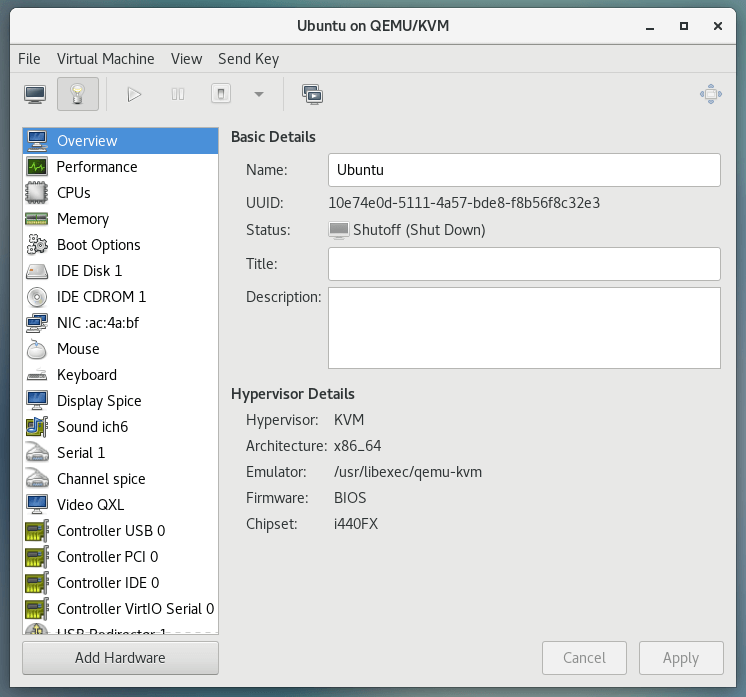
On Linux, QEMU versions 0.10.1 and later is one such userspace host. Map the guest's video display back onto the system host.The host must also supply a firmware image (usually a custom BIOS when emulating PCs) that the guest can use to bootstrap into its main OS. It exposes the /dev/kvm interface, which a user mode host can then use to: KVM provides device abstraction but no processor emulation.

This includes a paravirtual Ethernet card, disk I/O controller, balloon driver, and a VGA graphics interface using SPICE or VMware drivers.Ī high-level overview of the KVM/QEMU virtualization environment : 3 Īdditionally, KVM provides paravirtualization support for Linux, OpenBSD, FreeBSD, NetBSD, Plan 9 and Windows guests using the VirtIO API. In addition, Android 2.2, GNU/Hurd ( Debian K16), Minix 3.1.2a, Solaris 10 U3 and Darwin 8.0.1, together with other operating systems and some newer versions of these listed, are known to work with certain limitations. KVM provides hardware-assisted virtualization for a wide variety of guest operating systems including Linux, BSD, Solaris, Windows, Haiku, ReactOS, Plan 9, AROS Research Operating System and macOS. KVM was originally designed for x86 processors but has since been ported to S/390, PowerPC, IA-64, and ARM. KVM has also been ported to other operating systems such as FreeBSD and illumos in the form of loadable kernel modules. KVM requires a processor with hardware virtualization extensions, such as Intel VT or AMD-V. It was merged into the mainline Linux kernel in version 2.6.20, which was released on February 5, 2007.

Kernel-based Virtual Machine ( KVM) is a virtualization module in the Linux kernel that allows the kernel to function as a hypervisor.


 0 kommentar(er)
0 kommentar(er)
